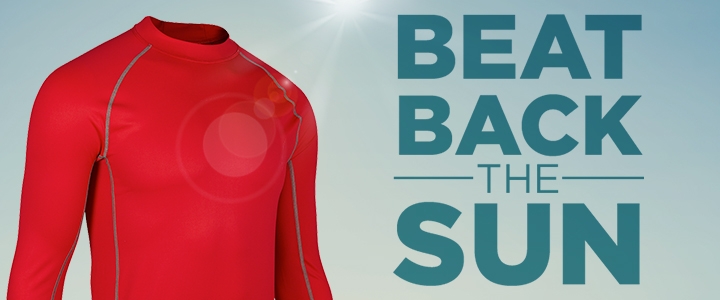Sun Protection 101: SPF, UPF, Sun-Protective Clothing & Sunscreen Explained
By now you’ve heard of shirts, hats, and various other items of apparel all designed with UPF treatment in the fabrics. While some fabrics inherently have UPF protection, others are treated to give them UPF properties.
It sounds like a miracle product, and in some ways it is. Maintaining proper sun protection is very important, as too much exposure can lead to some pretty nasty stuff, such as skin cancer.
While UPF apparel won’t provide shade or help you get a tan, these products are still a must-own for any outdoor enthusiast.
UV Rays
There are two types of ultraviolet rays that can cause harm: long-wave UVA and short-wave UVB.
UVA Rays: These cause the skin to prematurely age and can eventually lead to skin cancer. UVB Rays:This is what causes sun burn. UPF–unlike many sunscreens–protects against both.
UPF & SPF – What’s the Difference?
UPF:Described as, “The ultimate measure of clothing sun protection,” by the Skin Cancer Foundation (1), UPF (Ultraviolet Protection Factor) treatment is designed to limit the amount of ultraviolet rays that penetrate your clothing’s fabric. SPF: On the other hand, SPF (Sun Protection Factor) serves as a timetable of sorts, allowing you to know about how long it will take before your skin begins to redden while using a product that features it, such as sunscreen. (2)
How UPF Is Measured
Typically, when you see UPF in the clothing’s description, a number follows it. From UPF10 to UPF50+, each number offers a certain level of protection.It’s simple: the higher the number, the more protection you get. UPF50, for example, means that only 1/50 (2%) of UV Rays will pass through the fabric. As a general rule of thumb, anything above UPF15 is considered good, with 50+ being the highest. Anything featuring UPF30 or higher receives the Skin Cancer Foundation’s Seal of Recommendation. (1)
But how are these numbers obtained? And wouldn’t everything feature UPF50+?
There are several factors that help determine the UPF level. Fabric content, color, weight, and construction all factor into what level is offered.
Based on ASTM International testing, products that feature lycra and elastane are most likely to feature UPF50+; plastic, nylon and polyester all provide ample amounts, while cotton tends to feature the least.
Darker colors absorb more UV Rays than lighter colors–even when they’re made of the same material –while heavier garments protect better than lighter ones. Variables such as stretch or the item getting wet both reduce the UPF rating, as does the condition of the clothing (3).
Although it can be difficult to determine on your own, be sure to pay close attention to the label to ensure you’re receiving the proper protection.
SPF & Sunscreen
Similar to UPF, SPF also comes with a number attached to it which determines what percentage of UV Rays will be blocked. SPF ratings give you an idea of how long you can stay out in the sun before sunburn sets in, but it’s not an exact science. For example: SPF 15 means you can stay out in the sun 15 times longer than you could without sunscreen, however, there are various factors–such as skin type–which prevent it from being precise. According to skincentermd.com (4), SPF provides a better indicator for what percentage of UVB rays are filtered. SPF 15 prevents 92% of UVB rays and SPF 30 filters 97%.While SPF 40+, however, only sees an increase to 98%– meaning SPF 30 is likely the most you’ll ever need.
In addition to factors such as skin type, there are other variables that come into play with determining a sunscreen’s effectiveness. Many sunscreens hold some level of water resistance, however, none are truly waterproof. The longer you’re in water, the less effective it becomes. According to webmd.com (5), most water-resistant sunscreen holds up for about 40 minutes in water, while some can last as long as 80 minutes. Sweat is another factor, meaning you will need a different level of coverage while hiking than you would relaxing on the beach. Figuring out what works for you may take some time – and some sunburn – but knowing the basics will certainly help.
